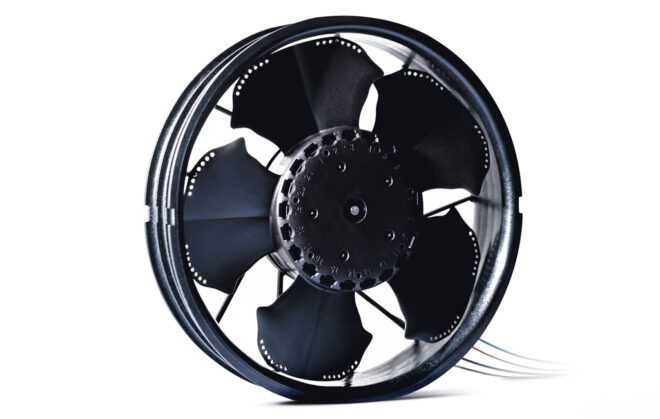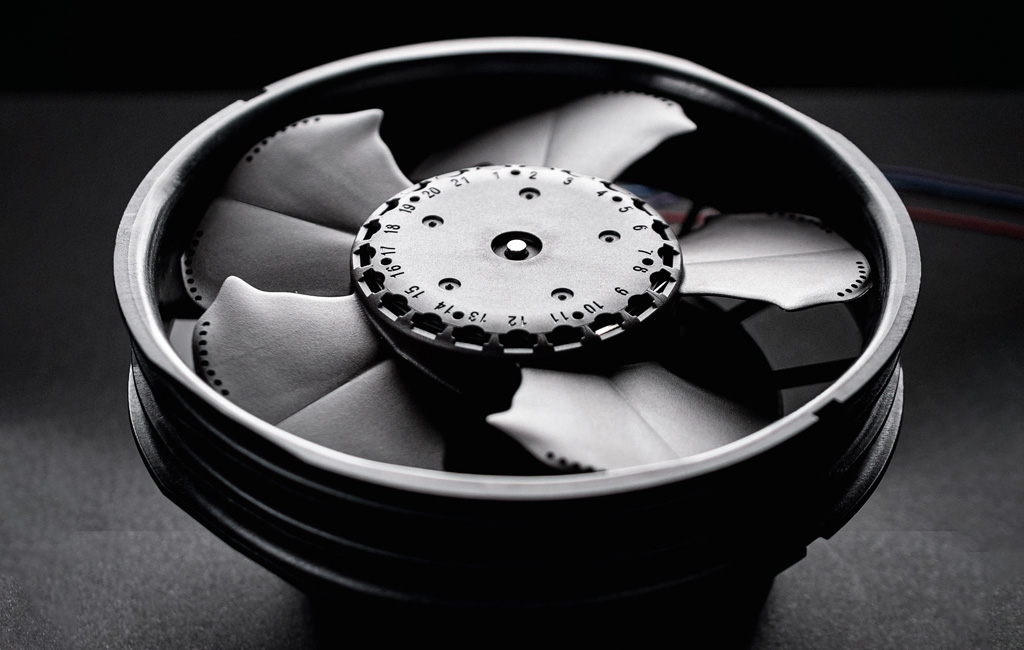Mr. Sieger, why is the AxiRev needed?
With increasing requirements for environmental protection and energy efficiency, more and more buildings are being insulated and rooms are being sealed airtight. However, to ensure a healthy, pleasant indoor climate, a different form of air exchange is required. Decentralized residential ventilation units are being increasingly used for this purpose because they can be easily installed in existing building facades. However, the fans used face several challenges, which the AxiRev solves in an optimal way.
What are these challenges?

Tobias Sieger, responsible for the ventilation design and flow simulation during the development of the AxiRev. (Photo | ebm-papst)
Firstly, the fans have to deliver a constant air flow in both directions of rotation, even when the wind force changes. Secondly, they should operate very quietly while consuming as little electricity as possible.
And the AxiRev does all of that?
Yes, we have developed the new AxiRev reverse fan specifically for these push-pull applications. In this type of application, the fan changes its direction of rotation every minute. We equipped it with new low-noise motor technology and an innovative aerodynamic design. The result is a uniform air flow, pleasant noise level, and maximum energy efficiency.
How did you make it windproof?
The characteristic curve is very steep, which means that, even in stormy weather conditions, there are only slight fluctuations in the air flow. This means that wind and storms have little influence on the efficiency and functioning of the decentralized residential ventilation unit. The almost symmetrical blade design ensures that the characteristic curve and thus also the volume of air conveyed are identical in both directions of rotation.

How did you reduce the noise?
This is based on a wide range of design and aerodynamic details. The striking blade tips and the openings at the ends of the blades minimize noise induced by the tip gap vortex, which in turn reduces the noise emissions. The thirteen struts with an aerodynamic profile also reduce turbulent trails, which ensures a very good psychoacoustic noise quality.
This means that the fan is not only quiet but its operating noise is also perceived as pleasant. The highly efficient EC motor developed especially for this application also works without annoying commutation or switching noises, even at extremely low speeds — and flow design and motor technology also enable very low energy consumption.

Leave a comment